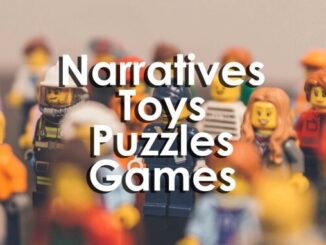
Many years ago, I attempted to create my own encyclopaedia of game mechanics by playing/reading the rules of all the board games I owned (which was a considerable number, and has only increased since then) and noting each separate mechanic on a card, and then attempting to sort them into categories on a Roladex – as a reference to inform my game design work.
Building Blocks of Tabletop Game Design is available on Amazon
I’m not sure whether I would have foregone that piece of work, if this book by Geoff Engelstein and Isaac Shalev had existed back then, because it was extremely instructive, but I would definitely have used the book as a starting point for my exploration of game mechanics.
Simply put, this book is an invaluable resource for any game designer, and I have found myself dipping into almost daily since I got it. Like the best sourcebooks it is easy to find what you require. The mechanics are categorised into chapters, by the purpose they serve inside a game and each mechanism is referenced by an id which indicates its category and order within the chapter – which I have found useful as a shortcut to reference them within game design documentation.
The impossibility of listing all game mechanics
While, as any game designer knows, there is often ambiguity about what category any specific mechanism should fit into, I think the authors have done an excellent job both in categorising a mechanic by its primary effect or purpose and in selecting the categories they will include in the book. There are 13 chapters each with between 10 and 20ish mechanics, ranging from the very broad – Chapter One is entitled ‘Game Structure’ and the very specific – Chapter 10 deals with ‘Movement’.
So, this is not intended to be an exhaustive list of all mechanics. This, in any case, would be an impossible task. Take for example STR-10 (Game Structure mechanic 10) – Legacy Games. A few years ago this term had not been coined. New mechanics are being discovered or invented all the time. In the introduction to the book the authors state where the lines have been drawn. First and most obviously, the title suggests that we are looking at the mechanics of tabletop games, but even within that, they state that e.g. wargaming, miniatures gaming and classic and collectible card games are only referenced in passing, and that whole categories such as narrative, dexterity and pantomime are equally lightly touched upon. Maybe these will form the basis of a further book, or furnish an opportunity for other authors to produce a similarly comprehensive work.
My very favourite thing about this book, are the discussions of each mechanic. Each mechanic is illustrated with a line graphic which visualises its effect neatly, a short description which explains the effect of the mechanic, and then the discussion, which demonstrates the mechanic in action in real games, so you can find out, for example, how Loans (ECO-07) work in Railway Tycoon or Wealth of Nations, or how Push-Your-Luck operates in Can’t Stop or Mystic Vale. Each mechanic section ends with a list of sample games which demonstrate the use of the specific mechanic.
Useful index for game design
At the rear of the book is the game index. This allows you to look up a game and see which mechanics it features. For example, when looking up Chess you will find ARC-06 – Force Projection, ECO-11 – Upgrades, MOV-01 – Tessellation, MOV-03 – Pattern Movement, RES-11 – Static Capture and STR-01 – Competitive Games.
Eric Zimmermann, who wrote the foreword for the book, mentions some points that are worth raising here too. While some may feel that the 184 mechanisms listed in the book are just a small fraction of those that exist, the categories that are included are treated with depth, for example there are now fewer than 16 different Auction mechanics – which brings me to one final point.
While these are game mechanics, the ideas they represent have application outside of games too -questions of fairness, communication and determining winners in a given situation amongst other things are illuminated by study of these games.
And far from ruining a thing by examining it too closely, reading this book can enrich your play too, even if you have no intention of ever designing a game yourself. Next time you play, your appreciation of a game will be enhanced by a greater understanding of how a mechanic is operating, and the care and thought that a designer has applied to make your experience just so.
Building Blocks of Tabletop Game Design is available on Amazon
- James Bore – The Ransomeware Game - 13th February 2024
- Ipsodeckso – Risky Business - 23rd January 2024
- Review – Luma World Games - 15th December 2023





Be the first to comment